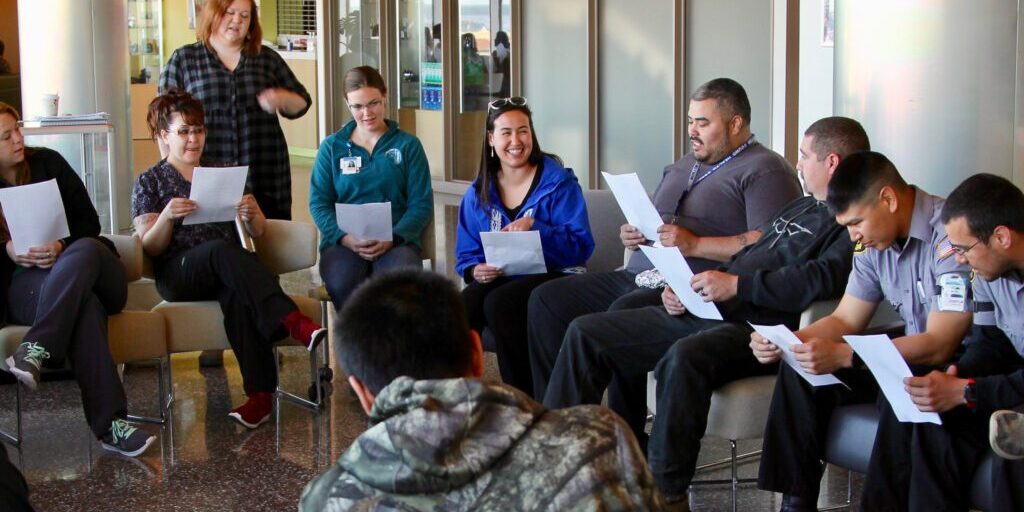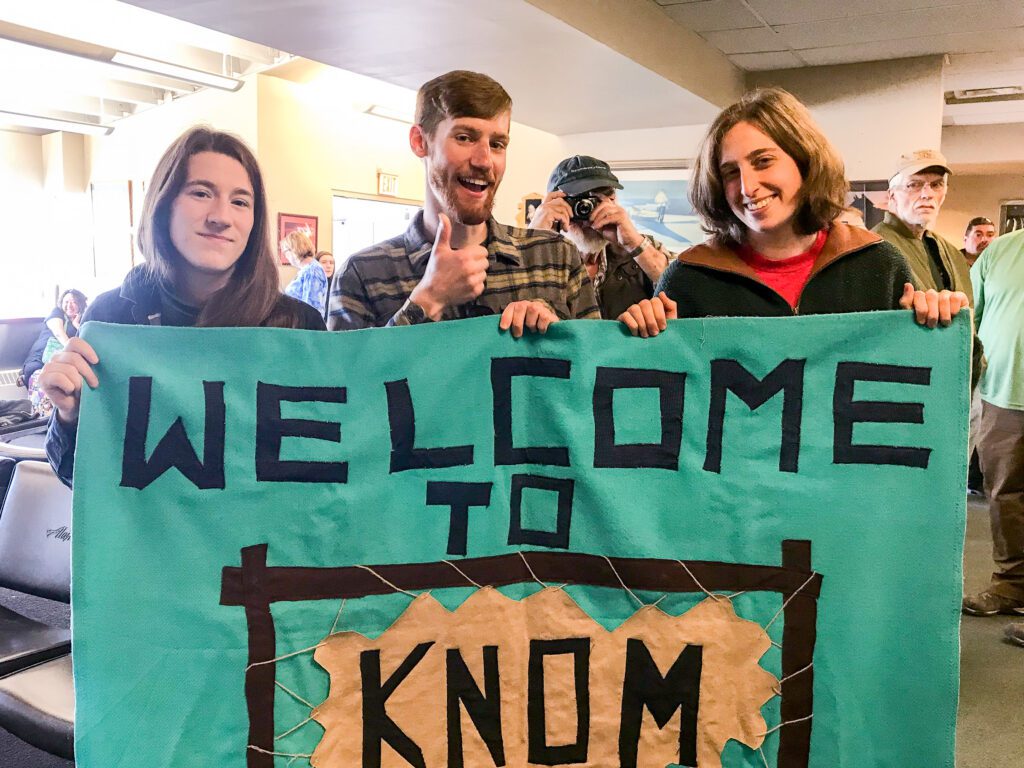“Our language comes from the land.” “Our language tells our history.” “Our language… tells us who we are.” These are reflections from a language class profiled last month on KNOM.
The class was about Inupiaq, one of the Native languages of the Bering Strait. As the feature by Gabe Colombo detailed, the class focused on employees of the Nome hospital. Many patients are more comfortable when doctors and nurses can converse in Inupiaq, even a little.
And as one of the instructors explained, “everybody has a role,” too. “You don’t have to know everything to teach a language; you just have to know more than the people that you’re teaching,” said instructor Cordelia Kellie, with a burst of laughter. “That way, everybody can progress, together, hand-in-hand.”
The attendees were from both Nome and the surrounding region. Class sessions took them to Solomon, 35 miles east of Nome. Solomon’s landscape helped students better understand one of the linguistic concepts they were studying: the variety of words and meanings associated with the concept “there,” far surpassing the complexity of “there” in English. As a teacher explained, when one is standing on the wide-open, windswept, mostly tree-less tundra landscape common in Western Alaska, “here” and “there” aren’t sufficiently specific for describing different places within view. Inupiaq concepts of “there” allow speakers to be more specific — and literally closer to the land they’re standing on.
“We All Learn Together” was the slogan of the class; in Inupiaq, it’s “Ilisaqativut” (ih-lih-suh-KAA-tee-voot). The concept not only conveyed a sense of camaraderie, but also plans for the future. This year’s teachers intend their students to become future Inupiaq instructors, so that each class continues a cycle of learning and teaching, receiving and giving back.
“I really closely associate Inupiaq with memories of my family and memories of fluent speakers that I’ve loved, but I don’t want it to just be in my memory,” said one of the class organizers. “I want to hear it into the future, as well, and I want to create new memories with Inupiaq, and I want my nephews and future members of my family to also have the opportunity to hear that in their childhood and have that connection to family that I have with our language.”
You can hear this story right here on knom.org.
Image at top: At Ilisaqativut, instructors taught the Inupiaq alphabet, which includes 28 distinct sounds, plus vowel combinations. Photo courtesy of Reba Lean, Norton Sound Health Corp.





